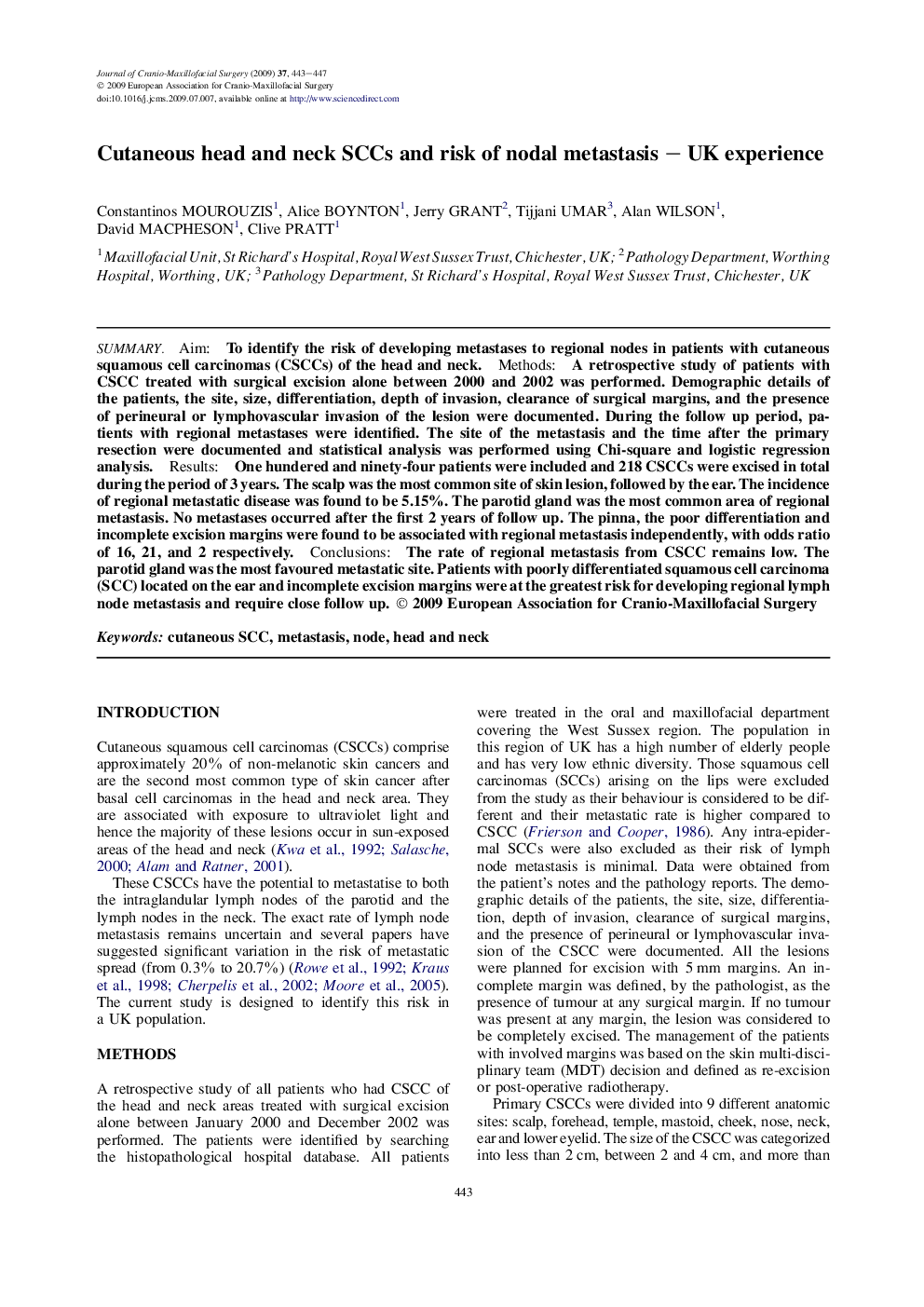| Article ID | Journal | Published Year | Pages | File Type |
|---|---|---|---|---|
| 3144104 | Journal of Cranio-Maxillofacial Surgery | 2009 | 5 Pages |
SummaryAimTo identify the risk of developing metastases to regional nodes in patients with cutaneous squamous cell carcinomas (CSCCs) of the head and neck.MethodsA retrospective study of patients with CSCC treated with surgical excision alone between 2000 and 2002 was performed. Demographic details of the patients, the site, size, differentiation, depth of invasion, clearance of surgical margins, and the presence of perineural or lymphovascular invasion of the lesion were documented. During the follow up period, patients with regional metastases were identified. The site of the metastasis and the time after the primary resection were documented and statistical analysis was performed using Chi-square and logistic regression analysis.ResultsOne hundered and ninety-four patients were included and 218 CSCCs were excised in total during the period of 3 years. The scalp was the most common site of skin lesion, followed by the ear. The incidence of regional metastatic disease was found to be 5.15%. The parotid gland was the most common area of regional metastasis. No metastases occurred after the first 2 years of follow up. The pinna, the poor differentiation and incomplete excision margins were found to be associated with regional metastasis independently, with odds ratio of 16, 21, and 2 respectively.ConclusionsThe rate of regional metastasis from CSCC remains low. The parotid gland was the most favoured metastatic site. Patients with poorly differentiated squamous cell carcinoma (SCC) located on the ear and incomplete excision margins were at the greatest risk for developing regional lymph node metastasis and require close follow up.
